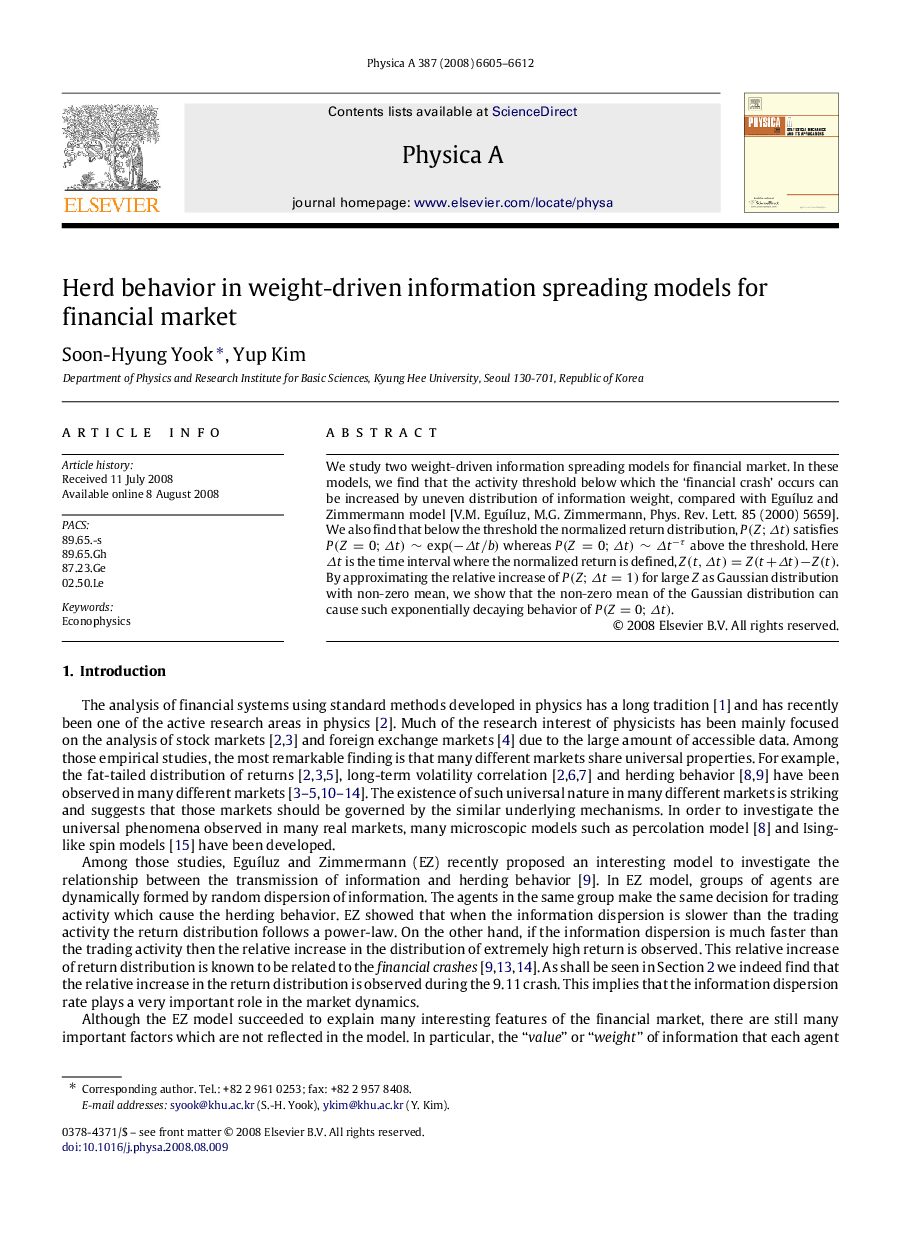| کد مقاله | کد نشریه | سال انتشار | مقاله انگلیسی | نسخه تمام متن |
|---|---|---|---|---|
| 977658 | 933200 | 2008 | 8 صفحه PDF | دانلود رایگان |

We study two weight-driven information spreading models for financial market. In these models, we find that the activity threshold below which the ‘financial crash’ occurs can be increased by uneven distribution of information weight, compared with Eguíluz and Zimmermann model [V.M. Eguíluz, M.G. Zimmermann, Phys. Rev. Lett. 85 (2000) 5659]. We also find that below the threshold the normalized return distribution, P(Z;Δt)P(Z;Δt) satisfies P(Z=0;Δt)∼exp(−Δt/b)P(Z=0;Δt)∼exp(−Δt/b) whereas P(Z=0;Δt)∼Δt−τP(Z=0;Δt)∼Δt−τ above the threshold. Here ΔtΔt is the time interval where the normalized return is defined, Z(t,Δt)=Z(t+Δt)−Z(t)Z(t,Δt)=Z(t+Δt)−Z(t). By approximating the relative increase of P(Z;Δt=1)P(Z;Δt=1) for large ZZ as Gaussian distribution with non-zero mean, we show that the non-zero mean of the Gaussian distribution can cause such exponentially decaying behavior of P(Z=0;Δt)P(Z=0;Δt).
Journal: Physica A: Statistical Mechanics and its Applications - Volume 387, Issue 26, 15 November 2008, Pages 6605–6612